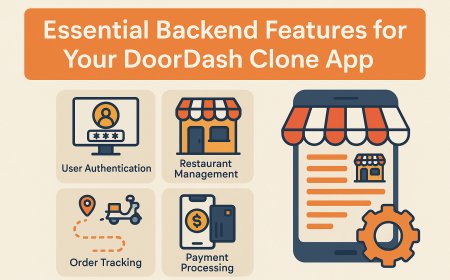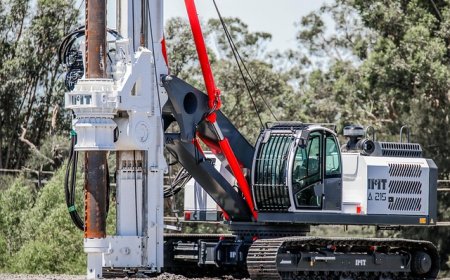How to Install Ubuntu
How to Install Ubuntu: A Complete Step-by-Step Guide for Beginners and Professionals Ubuntu is one of the most popular Linux distributions in the world, trusted by developers, enterprises, educators, and home users alike. Known for its stability, security, and user-friendly interface, Ubuntu offers a powerful alternative to proprietary operating systems like Windows and macOS. Whether you’re looki
How to Install Ubuntu: A Complete Step-by-Step Guide for Beginners and Professionals
Ubuntu is one of the most popular Linux distributions in the world, trusted by developers, enterprises, educators, and home users alike. Known for its stability, security, and user-friendly interface, Ubuntu offers a powerful alternative to proprietary operating systems like Windows and macOS. Whether you’re looking to breathe new life into an old computer, learn Linux for development, or simply desire more control over your digital environment, installing Ubuntu is a transformative step.
This guide provides a comprehensive, step-by-step tutorial on how to install Ubuntu on a variety of hardware configurations. We cover everything from preparing your installation media to post-installation configuration, ensuring you can complete the process confidently—even if you’ve never used Linux before. By the end of this guide, you’ll understand not only how to install Ubuntu, but why each step matters, how to avoid common pitfalls, and how to optimize your system for performance and security.
Step-by-Step Guide
1. Understand Your Hardware Requirements
Before downloading Ubuntu, ensure your system meets the minimum hardware requirements. While Ubuntu is lightweight compared to many modern operating systems, running it smoothly depends on your intended use case.
For a standard desktop installation, the official minimum requirements are:
- 2 GHz dual-core processor or better
- 4 GB of system memory (RAM)
- 25 GB of free hard drive space
- VGA capable of 1024x768 screen resolution
- Internet access (recommended for updates and third-party software)
If you’re installing Ubuntu on older hardware or plan to use it for lightweight tasks, consider Ubuntu-flavored variants such as Lubuntu or Xubuntu, which use lighter desktop environments and require less RAM and CPU power. For servers, Ubuntu Server edition is optimized for headless operation and does not include a graphical interface by default.
2. Choose the Right Ubuntu Version
Ubuntu releases a new version every six months, with Long-Term Support (LTS) versions released every two years. LTS versions receive five years of security and maintenance updates and are recommended for most users, especially those deploying Ubuntu in production environments or for critical tasks.
As of 2024, the latest LTS version is Ubuntu 22.04 LTS (Jammy Jellyfish). The next LTS, Ubuntu 24.04 LTS (Noble Numbat), is scheduled for release in April 2024. Always prefer an LTS version unless you require the latest features and are comfortable with more frequent upgrades.
Visit ubuntu.com/download/desktop to download the latest LTS ISO file. Avoid third-party mirrors unless they are officially listed on Ubuntu’s website, as unofficial sources may contain modified or compromised files.
3. Create a Bootable USB Drive
To install Ubuntu, you need a bootable USB drive with the downloaded ISO image. This process is straightforward on Windows, macOS, and Linux.
On Windows:
Download and install Rufus, a free, open-source utility for creating bootable USB drives.
- Insert a USB flash drive with at least 4 GB of storage.
- Launch Rufus. It will automatically detect your USB drive.
- Under “Boot selection,” click “SELECT” and browse to your downloaded Ubuntu ISO file.
- Ensure “Partition scheme” is set to “GPT” for UEFI systems or “MBR” for older BIOS systems. Most modern computers use UEFI, so GPT is recommended.
- Click “START.” Rufus will warn you that all data on the USB drive will be erased—confirm this action.
- Wait for the process to complete. This may take 5–15 minutes depending on your USB speed.
On macOS:
macOS does not include a built-in tool for creating Linux boot drives, so you’ll use the Terminal.
- Insert your USB drive.
- Open Terminal (Applications → Utilities → Terminal).
- Run
diskutil listto identify your USB drive (look for the size and name, e.g., /dev/disk2). - Unmount the drive using:
diskutil unmountDisk /dev/disk2(replace disk2 with your actual device identifier). - Use the
ddcommand to write the ISO:sudo dd if=/path/to/ubuntu-22.04-desktop-amd64.iso of=/dev/disk2 bs=1m - Wait for the command to complete. You won’t see progress indicators—this is normal. When done, you’ll see a message like “1234+0 records in” and “1234+0 records out.”
- Eject the drive with:
diskutil eject /dev/disk2
On Linux:
Linux users can use the built-in “Disks” utility or the command line.
- Open “Disks” from your applications menu.
- Select your USB drive from the left panel.
- Click the menu button (three horizontal lines) and choose “Restore Disk Image.”
- Select your Ubuntu ISO file and click “Start Restoring.”
- Confirm the warning and wait for completion.
Alternatively, use the terminal with the dd command (same as macOS):
sudo dd if=/path/to/ubuntu-22.04-desktop-amd64.iso of=/dev/sdX bs=4M status=progress oflag=syncReplace /dev/sdX with your USB device (e.g., /dev/sdb). Double-check the device name to avoid overwriting your main hard drive.
4. Boot from the USB Drive
Once your USB drive is ready, insert it into the target computer and restart it.
Most computers require you to press a key during startup to access the boot menu. Common keys include:
- Esc
- F12
- F10
- F2
- Del (Delete)
Check your manufacturer’s documentation if unsure. Once in the boot menu, select your USB drive. If you don’t see it, enter the BIOS/UEFI settings (usually by pressing F2 or Del) and ensure that “Boot from USB” is enabled. Disable “Secure Boot” if you encounter boot issues, though Ubuntu supports Secure Boot on most modern systems.
After selecting the USB drive, you’ll see the Ubuntu boot menu with options like “Try or Install Ubuntu” and “Check Disc for Defects.” Select “Install Ubuntu” to begin the installation process.
5. Begin the Ubuntu Installation Process
The Ubuntu installer is graphical and intuitive. Follow these steps carefully.
Step 1: Select Language
Choose your preferred language and click “Continue.”
Step 2: Keyboard Layout
Select your keyboard layout. If unsure, choose “Detect Keyboard Layout.”
Step 3: Network Connection
Connect to Wi-Fi if available. This allows the installer to download updates and third-party software during installation. If you’re installing on a desktop with Ethernet, this step is automatic.
Step 4: Installation Type
This is one of the most critical steps. You’ll see several options:
- Erase disk and install Ubuntu – Deletes all data on the selected drive and installs Ubuntu. Use this if you’re replacing Windows or macOS entirely.
- Install Ubuntu alongside Windows/macOS – Sets up a dual-boot system. The installer will automatically resize your existing partition to make space for Ubuntu.
- Something else – Manual partitioning. Recommended for advanced users or those with complex storage setups.
For beginners, “Erase disk and install Ubuntu” is the safest and simplest option. If you want to dual-boot, choose “Install Ubuntu alongside Windows” (or macOS). The installer will handle partitioning automatically.
If you choose “Something else,” you’ll need to manually create partitions. At minimum, create:
- / (root) – 20–30 GB for the operating system and applications (ext4 filesystem)
- swap – Equal to your RAM size (optional on modern systems with 8 GB+ RAM)
- /home – Remaining space (ext4 filesystem) – stores your personal files, documents, and settings
Be extremely cautious when manually partitioning—deleting the wrong partition can result in permanent data loss.
Step 5: Location
Select your time zone. The installer will auto-detect your location based on your IP address, but verify it’s correct.
Step 6: User Information
Enter your full name, computer name, username, and password. You’ll use this username to log in after installation.
Check the box labeled “Log in automatically” if you’re installing on a personal machine and want to skip the login screen. For shared or work devices, leave this unchecked for security.
Also check “Encrypt my home folder” if you’re concerned about data privacy. This encrypts your personal files with a key tied to your password. Note: this may slightly impact performance and can complicate data recovery if you forget your password.
Step 7: Wait for Installation
The installer will now copy files and configure your system. This typically takes 10–20 minutes. You’ll see progress bars and status messages. Do not interrupt the process.
6. Reboot and Remove USB Drive
Once installation is complete, you’ll see a message: “Installation complete. Restart now.”
Click “Restart.” The system will power off and then reboot. As it restarts, remove the USB drive immediately after the manufacturer’s logo appears. If you leave it in, the system may try to boot from it again.
Your computer will now boot into your new Ubuntu desktop environment. You’ll be prompted to log in with the username and password you created during installation.
Best Practices
Backup Your Data Before Installing
Even if you plan to install Ubuntu alongside your existing OS, always back up important files before proceeding. Partitioning and formatting operations carry inherent risks. Use an external hard drive, cloud storage, or network location to store critical documents, photos, and media.
Verify the ISO File Integrity
After downloading the Ubuntu ISO, verify its SHA256 checksum to ensure the file hasn’t been corrupted or tampered with. On Windows, use PowerShell:
Get-FileHash -Algorithm SHA256 C:\path\to\ubuntu-22.04-desktop-amd64.isoOn macOS or Linux:
sha256sum /path/to/ubuntu-22.04-desktop-amd64.isoCompare the output with the checksum listed on the official Ubuntu download page. If they don’t match, download the file again.
Update Ubuntu Immediately After Installation
Ubuntu ships with the latest stable packages, but updates are released daily. After logging in, open the terminal (Ctrl+Alt+T) and run:
sudo apt update && sudo apt upgrade -yThis ensures your system has the latest security patches and software improvements.
Install Essential Third-Party Software
Ubuntu doesn’t include proprietary drivers or codecs by default due to licensing restrictions. Install them using:
sudo apt install ubuntu-restricted-extrasThis package adds support for MP3, DVD playback, Flash, Microsoft fonts, and common codecs. You’ll be prompted to accept the license agreement—press Tab to highlight “OK” and press Enter.
Enable Automatic Updates
For security and stability, enable automatic updates:
- Open “Software & Updates” from the application menu.
- Go to the “Updates” tab.
- Under “Automatic Updates,” select “Download and install automatically.”
- Choose “Notify me of a new Ubuntu version” → “For long-term support versions” (if using LTS).
Use a Strong Password and Enable Firewall
Ubuntu comes with UFW (Uncomplicated Firewall) preinstalled. Enable it with:
sudo ufw enableCheck its status with:
sudo ufw statusSet a strong, unique password for your user account. Avoid common passwords or dictionary words. Consider using a password manager to generate and store complex passwords securely.
Disable Unnecessary Startup Applications
Some applications launch automatically at startup and slow down boot time. To manage them:
- Open “Startup Applications” from the application menu.
- Uncheck any programs you don’t need to run at login (e.g., Bluetooth manager, printer utilities if unused).
Regularly Clean Up System
Over time, package caches and old kernels accumulate. Clean them monthly:
sudo apt autoremove && sudo apt autocleanTo remove old kernel versions manually:
dpkg -l | grep linux-imageKeep only the latest two kernel versions and remove the rest:
sudo apt remove linux-image-5.x.x-x-genericTools and Resources
Essential Tools for Ubuntu Installation and Management
- Rufus – Windows tool for creating bootable USB drives (https://rufus.ie/)
- Etcher – Cross-platform (Windows, macOS, Linux) tool for flashing ISO images (https://www.balena.io/etcher/)
- GNOME Disks – Built-in Linux utility for managing storage devices
- GNOME Software – Graphical app store for installing applications
- APT – Ubuntu’s default package manager (command-line:
apt) - Timeshift – System snapshot tool for creating restore points (install via
sudo apt install timeshift)
Official Documentation and Community Support
Ubuntu’s official documentation is one of the most comprehensive resources available for any operating system:
- Ubuntu Help – Official user guides
- Ubuntu Discourse – Community forums for troubleshooting and discussion
- Ask Ubuntu – Stack Exchange-based Q&A site with expert answers
- Ubuntu Tutorials – Step-by-step video and text guides
For enterprise users, Canonical (Ubuntu’s parent company) offers paid support, documentation, and security audits. For personal use, the community resources are more than sufficient.
Recommended Software After Installation
Once Ubuntu is running, consider installing these tools:
- Firefox – Default browser, already installed
- LibreOffice – Full office suite (Word, Excel, PowerPoint alternatives)
- VLC Media Player – Plays virtually all video and audio formats
- Steam – For gaming on Linux
- Visual Studio Code – Popular code editor for developers
- Signal – Secure messaging app
- Nextcloud Client – Sync files with your own cloud server
Install any of these via the Ubuntu Software Center or the terminal:
sudo apt install vlc code signal-desktopMonitoring and Diagnostic Tools
Keep an eye on system performance with:
- htop – Interactive process viewer (
sudo apt install htop) - GNOME System Monitor – Graphical resource monitor
- Disks – Check SMART status of your hard drive
- Netdata – Real-time performance dashboard (advanced users)
Real Examples
Example 1: Installing Ubuntu on an Old Laptop
John has a 2012 Dell Inspiron 15 with 2 GB RAM and a 320 GB HDD. He wants to use it for web browsing and document editing. He downloads Lubuntu 22.04 LTS, which uses the LXQt desktop environment and requires only 1 GB of RAM.
He creates a bootable USB with Rufus, boots from it, and selects “Erase disk and install Lubuntu.” After installation, he installs Firefox, LibreOffice, and VLC. He disables animations in the system settings for better performance. His laptop now boots in under 20 seconds and runs smoothly.
Example 2: Dual-Booting Ubuntu with Windows 11
Sarah is a graphic designer who uses Adobe Photoshop on Windows but wants to learn Linux for web development. She has a 512 GB SSD with 300 GB free space.
She downloads Ubuntu 22.04 LTS and creates a bootable USB. During installation, she chooses “Install Ubuntu alongside Windows Boot Manager.” The installer automatically shrinks her Windows partition and creates a 100 GB Ubuntu partition. After rebooting, she sees a GRUB menu offering both OS options.
She installs the NVIDIA drivers for her GPU via “Additional Drivers” in Software & Updates. She also installs Docker for containerized development. Now she switches between Windows and Ubuntu daily, using each for its strengths.
Example 3: Installing Ubuntu Server on a Home NAS
David wants to turn an old desktop with 8 GB RAM and 4 TB of storage into a personal file server. He downloads Ubuntu Server 22.04 LTS (no GUI).
He installs it on a 64 GB SSD, leaving the 4 TB drives for data storage. He configures LVM during installation for flexible volume management. After installation, he runs:
sudo apt install samba nfs-kernel-serverHe sets up Samba shares for Windows machines and NFS for Linux devices. He configures automatic backups using rsync and cron. He enables SSH for remote access and secures it with key-based authentication. His server now runs 24/7 with minimal power consumption.
FAQs
Can I install Ubuntu without losing my files?
Yes, if you choose “Install Ubuntu alongside Windows” or “Something else” and manually preserve your existing partitions. However, always back up your data before any OS installation. Even with dual-booting, partitioning errors can lead to data loss.
Do I need a product key to install Ubuntu?
No. Ubuntu is completely free and open-source. There is no activation, licensing, or product key required.
Can I install Ubuntu on a Mac?
Yes. Ubuntu runs on Intel-based Macs. Apple Silicon (M1/M2) Macs have limited support as of 2024, but community efforts (like Asahi Linux) are making progress. For Apple Silicon, consider using virtualization or waiting for official support.
What if my Wi-Fi doesn’t work after installation?
Some wireless cards require proprietary drivers. Open “Software & Updates” → “Additional Drivers” and select the recommended driver for your Wi-Fi adapter. Apply changes and reboot.
How do I uninstall Ubuntu and return to Windows?
Boot into Windows and use Disk Management to delete the Ubuntu partitions (ext4 and swap). Then extend your Windows partition to reclaim the space. Finally, use a Windows recovery USB to repair the bootloader with bootrec /fixmbr and bootrec /fixboot.
Is Ubuntu safe from viruses?
Ubuntu is significantly less vulnerable to malware than Windows due to its architecture, user permissions model, and smaller target size. However, it’s not immune. Avoid installing software from untrusted sources, keep your system updated, and use a firewall. Most users never encounter malware on Ubuntu.
How often should I upgrade Ubuntu?
If you’re using an LTS version, you only need to upgrade every two years. Non-LTS versions should be upgraded every six months. Use do-release-upgrade in the terminal to upgrade. Always backup first.
Can I run Windows programs on Ubuntu?
Some Windows programs work using Wine (a compatibility layer) or virtual machines. Install Wine with sudo apt install wine. For better compatibility, consider dual-booting or using a virtual machine with VirtualBox or VMware.
What if the installation freezes or crashes?
Try booting with “Safe Graphics” mode from the GRUB menu. If problems persist, test your RAM with the “Check memory” option in the boot menu. Corrupted USB drives or faulty hardware can cause installation failures.
How do I know if I installed Ubuntu correctly?
After logging in, open the terminal and run lsb_release -a. It should display your Ubuntu version. Run uname -r to see your kernel version. Open a browser and visit a website. If everything works, your installation was successful.
Conclusion
Installing Ubuntu is more accessible than ever, thanks to its intuitive installer, strong community support, and broad hardware compatibility. Whether you’re upgrading an aging machine, learning Linux for career growth, or seeking a more private and secure computing experience, Ubuntu delivers a powerful, flexible, and free platform.
This guide has walked you through every critical step—from preparing your installation media to configuring your system for optimal performance. By following best practices like verifying ISO integrity, backing up data, enabling automatic updates, and installing essential software, you’ve not only installed Ubuntu—you’ve set yourself up for long-term success.
Remember: Ubuntu is not just an operating system—it’s a gateway to open-source innovation, developer freedom, and digital sovereignty. As you explore its terminal, customize its desktop, and install new tools, you’re joining a global community of millions who believe technology should be open, transparent, and user-controlled.
Don’t hesitate to revisit this guide as a reference, explore the official documentation, or join community forums to deepen your knowledge. The journey with Ubuntu has just begun—and the possibilities are limitless.





































